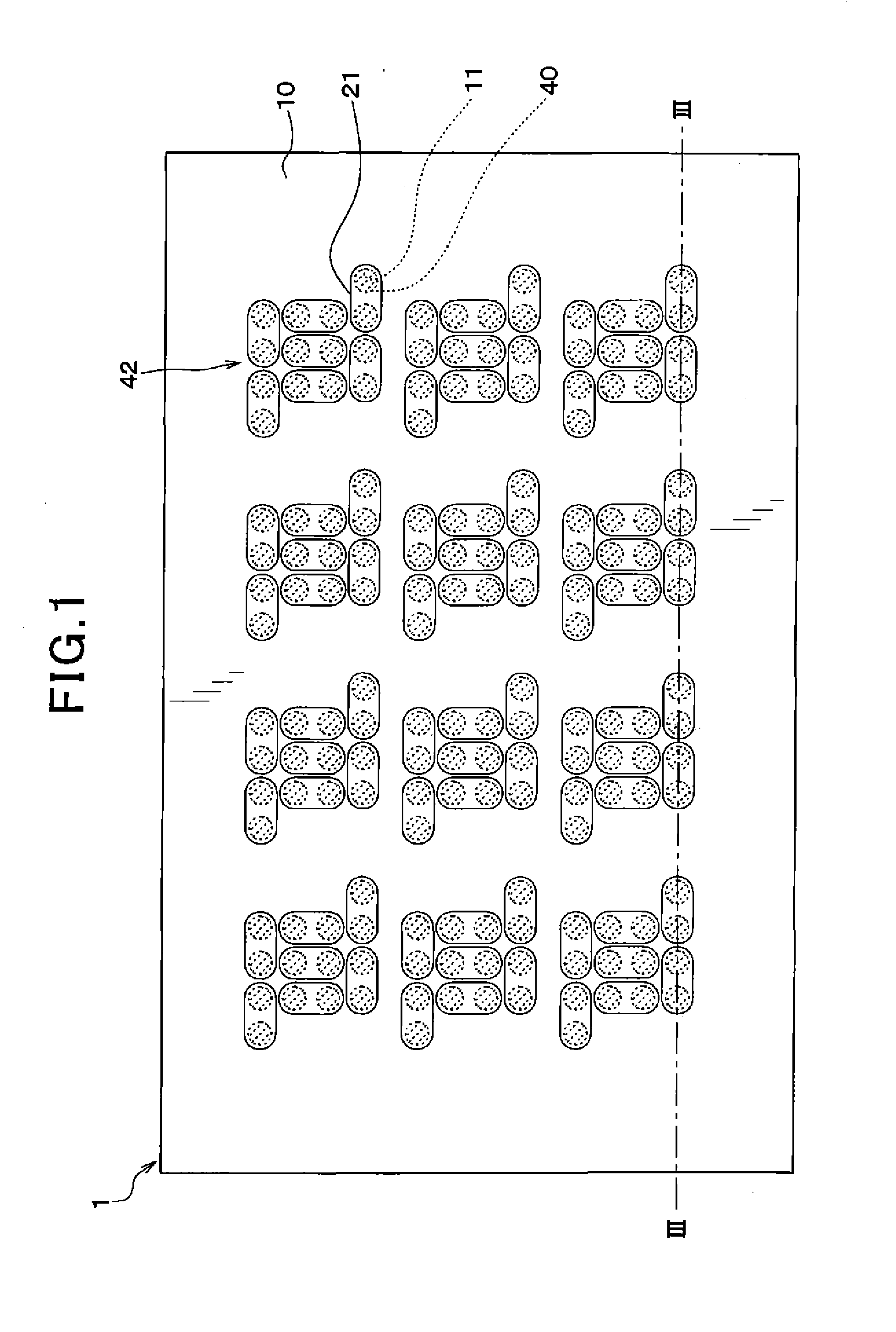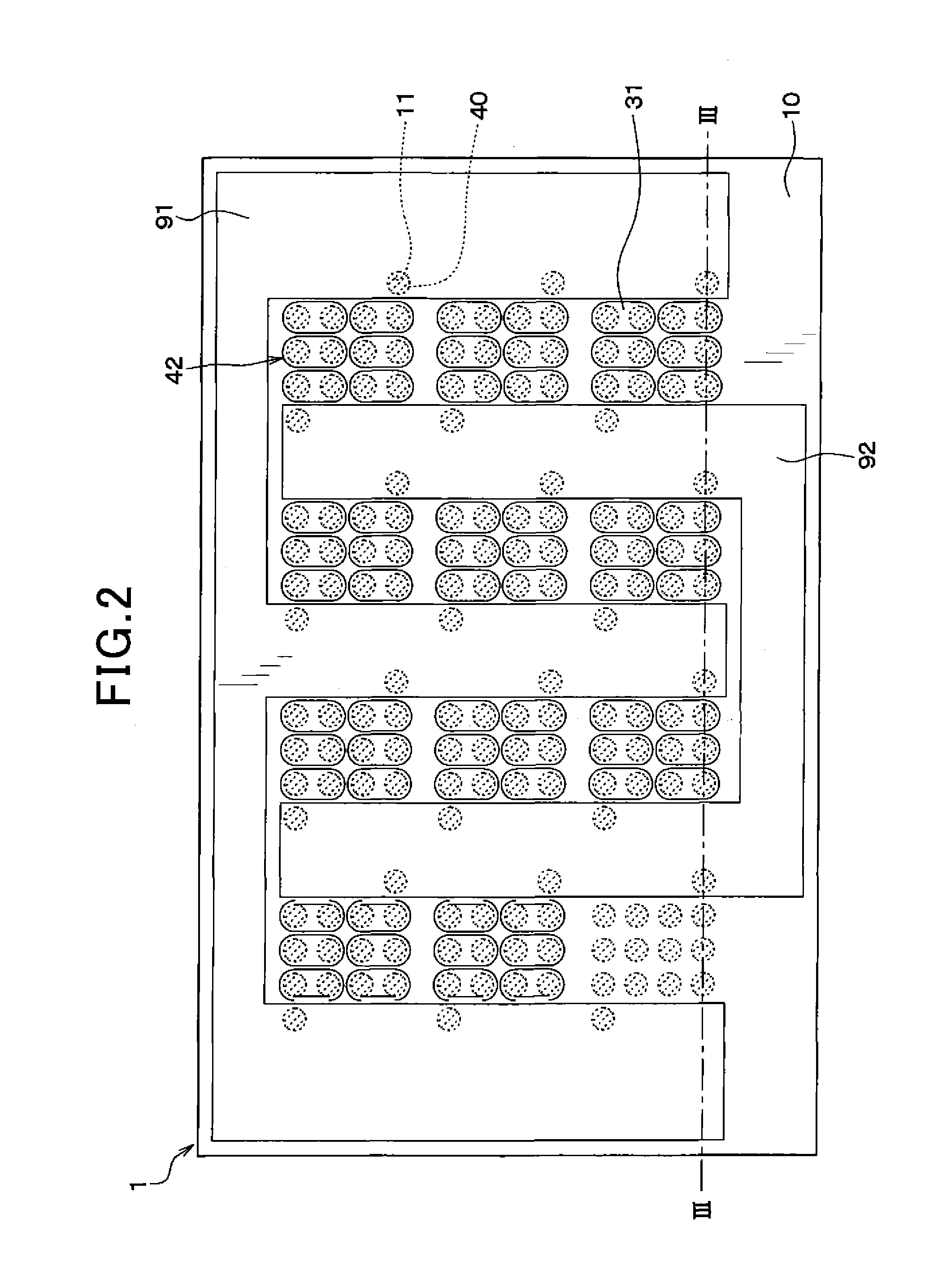Heat generating device
a heat generation device and heat generation technology, applied in the field of heat generation devices, can solve problems such as burning of occupants
- Summary
- Abstract
- Description
- Claims
- Application Information
AI Technical Summary
Benefits of technology
Problems solved by technology
Method used
Image
Examples
first embodiment
[0019]The first embodiment of the invention will be described below with reference to drawings. The heat generating device 1 of this embodiment is, as illustrated in FIGS. 1 to 3, made by unifying an insulating base 10, a front side protective member 20, and a reverse side protective layer 30 and arranging heating resistors 40 inside that unit.
[0020]FIG. 1 omits the front side protective member 20 for the ease of understanding. FIG. 2 omits the reverse side protective member 20 for the ease of understanding. FIGS. 1 and 2 are not sectional views, but hatch the heating resistors 40.
[0021]In this embodiment, the insulating base 10 is formed by a rectangular planar thermoplastic resin film containing polyether ether ketone (PEEK) and polyetherimide (PEI). The insulating base 10 has a plurality of via holes 11 extending through a thickness thereof.
[0022]The insulating base 10 has the 168 via holes 11 which are broken down into a plurality of groups each made up of fourteen of the via ho...
second embodiment
[0046]The heat generating device 1 according to the second embodiment of the invention will be described below. The heat generating device 1 of this embodiment is different from the one of the first embodiment in that all the heating resistors 40 are connected in parallel. Other arrangements are identical, and explanation thereof in detail will be omitted here.
[0047]The front side protective member 20, as illustrated in FIGS. 7 to 9, has a single front side layer 21 formed on the surface 20a facing the insulating base 10. The front side layer 21 is electrically connected to all the healing resistors 40. In other words, the respective heating resistors 40 are electrically coupled with the same front side layer 21.
[0048]For the sake of ease of understanding, FIG. 7 omits the front side protective member 20. FIG. 7 is not a sectional view, but hatches the heating resistors 40. On the front side protective member 20, a layer-to-layer connecting member, not shown, is formed which is elec...
PUM
| Property | Measurement | Unit |
|---|---|---|
| thickness | aaaaa | aaaaa |
| conductive | aaaaa | aaaaa |
| temperature | aaaaa | aaaaa |
Abstract
Description
Claims
Application Information
 Login to View More
Login to View More - R&D
- Intellectual Property
- Life Sciences
- Materials
- Tech Scout
- Unparalleled Data Quality
- Higher Quality Content
- 60% Fewer Hallucinations
Browse by: Latest US Patents, China's latest patents, Technical Efficacy Thesaurus, Application Domain, Technology Topic, Popular Technical Reports.
© 2025 PatSnap. All rights reserved.Legal|Privacy policy|Modern Slavery Act Transparency Statement|Sitemap|About US| Contact US: help@patsnap.com



